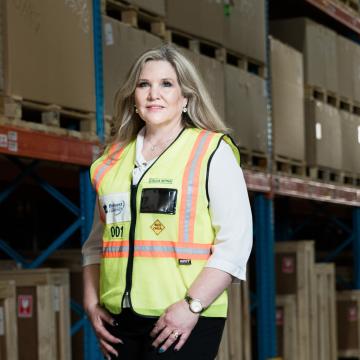As part of authorised economic operator (AEO) accreditation, more than 500 companies have discovered that customs compliance is dependent on having adequate processes in place to limit possible contraventions.
Checking the quality of a declaration against the shipping documents before submitting to customs is a crucial part of the customs clearance process and should be a standard practice for any company working in the customs and excise environment.
Human error will always be a factor, but limitation is key.
A minor error can result in delays obtaining the release of a consignment, often resulting in additional costs and possible penalties. It is just as important, however, to audit a file after the consignment has been finalized.
While most would agree that customs contraventions pose the biggest risk, it is important to understand that not all errors are detected by the South African Revenue Service’s risk-management system, as most declarations are auto released.
An error may therefore only be detected some time after the goods have been delivered and, in many cases, are easily corrected, but files should not be audited only to detect errors.
Section 101 of the Customs and Excise Act of 1964, read with the rules to section 101, makes provision for the keeping of records for at least five years and documents must be made available to the commissioner.
It is equally important then to audit files to ensure that all the relevant documents relating to a specific consignment have been placed on file.
The old saying, ‘there is always room for improvement’, comes to mind, and this is particularly true in the logistics industry.
Continuously improving systems and processes are of paramount importance in an industry that changes daily, where importers and exporters demand the highest levels of service and expertise.
The post-clearance auditing process not only shows customs a commitment to being compliant, it can also be used as a marketing tool to attract new business, and to satisfy the demands of existing clients.
When applying for AEO accreditation, quality checks on declarations are a basic requirement, but less importance is placed on audits after clearance has been completed. So, what should one look for when auditing a file?
For customs purposes, a full set of documents must be on hand, and this would include the declaration and shipping documents. For auditing purposes, supporting documents such as invoices, delivery documents and communications should be included.
With a complete set of documents available, it is then relatively easy to ascertain if the shipment was handled correctly, both in terms of customs requirements and the client’s instructions.
When errors are detected, they should not just be corrected, but there should be a remedial process in place to ensure that the same error does not occur again, and non-compliance is then minimised.
Audits may also serve as a reminder to finalise an outstanding matter, such as liquidating a provisional payment or submitting an acquittal document to customs. Internal audits need not be complicated or time-consuming, but there are obvious benefits when conducting this process, such as customs compliance, financial impact, operational stability and client satisfaction.
Internal auditing is not a requirement but should be seriously considered.







